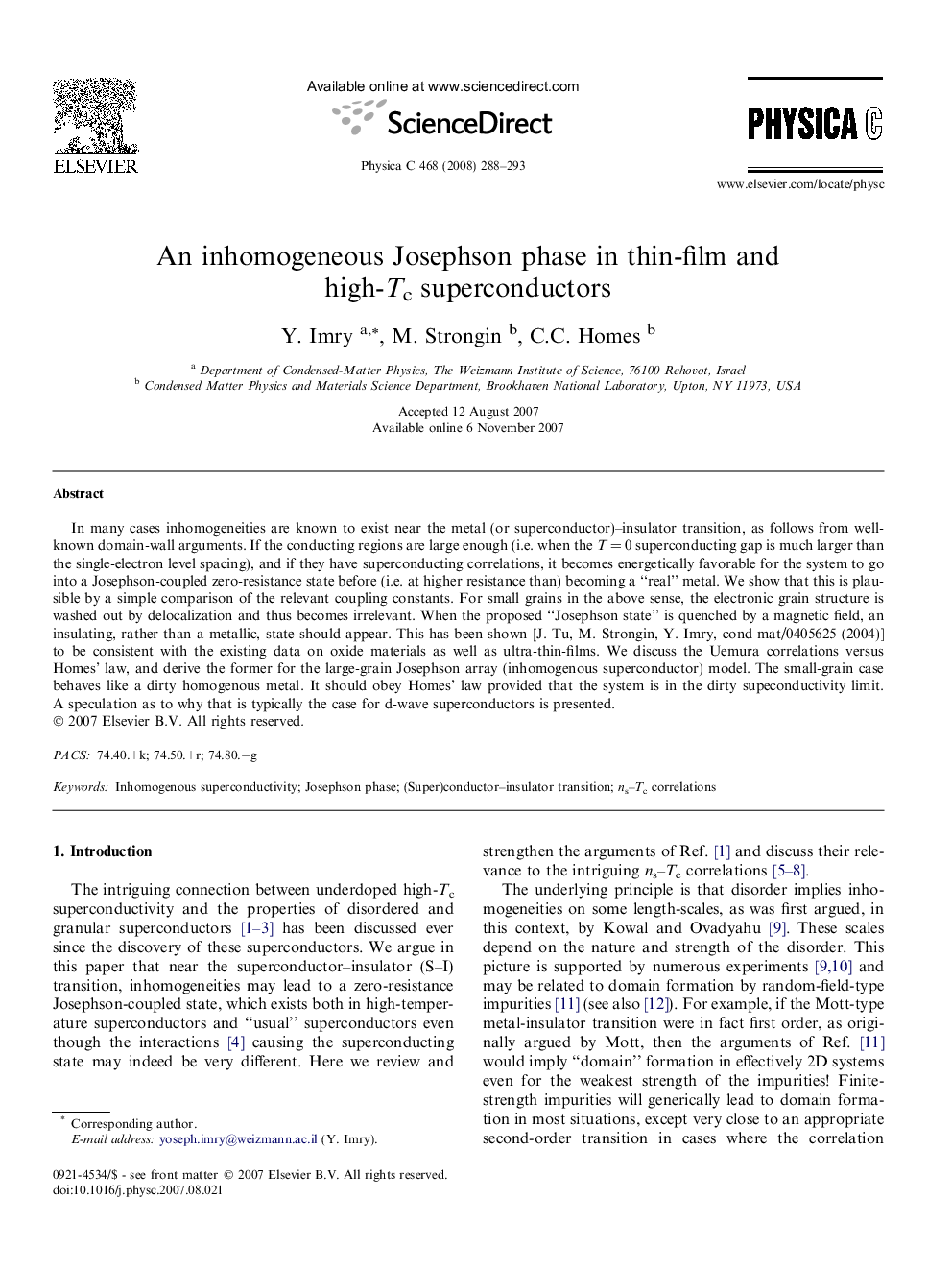| Article ID | Journal | Published Year | Pages | File Type |
|---|---|---|---|---|
| 1819602 | Physica C: Superconductivity and its Applications | 2008 | 6 Pages |
In many cases inhomogeneities are known to exist near the metal (or superconductor)–insulator transition, as follows from well-known domain-wall arguments. If the conducting regions are large enough (i.e. when the T = 0 superconducting gap is much larger than the single-electron level spacing), and if they have superconducting correlations, it becomes energetically favorable for the system to go into a Josephson-coupled zero-resistance state before (i.e. at higher resistance than) becoming a “real” metal. We show that this is plausible by a simple comparison of the relevant coupling constants. For small grains in the above sense, the electronic grain structure is washed out by delocalization and thus becomes irrelevant. When the proposed “Josephson state” is quenched by a magnetic field, an insulating, rather than a metallic, state should appear. This has been shown [J. Tu, M. Strongin, Y. Imry, cond-mat/0405625 (2004)] to be consistent with the existing data on oxide materials as well as ultra-thin-films. We discuss the Uemura correlations versus Homes’ law, and derive the former for the large-grain Josephson array (inhomogenous superconductor) model. The small-grain case behaves like a dirty homogenous metal. It should obey Homes’ law provided that the system is in the dirty supeconductivity limit. A speculation as to why that is typically the case for d-wave superconductors is presented.
